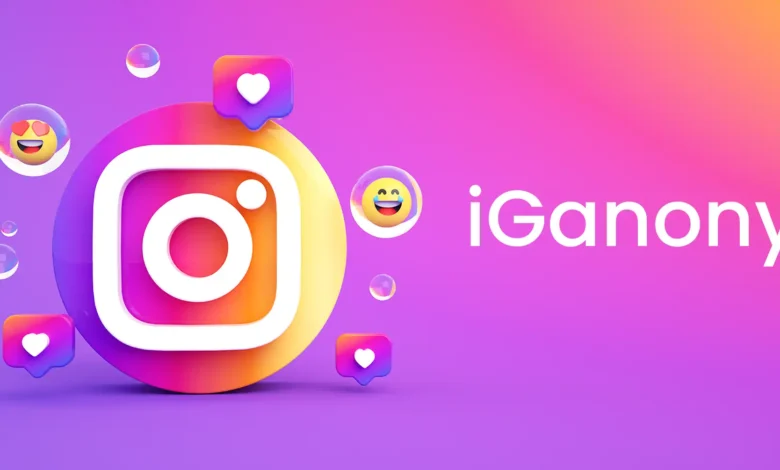Understanding IGagony: Navigating the Complex Emotions of Social Media

In the fast-paced and ever-evolving world of social media, new terms and concepts constantly emerge to capture unique digital experiences. Among these, “IGagony” has gained popularity, encapsulating a specific type of frustration and emotional discomfort associated with Instagram, or “IG.” This article delves deeply into the concept of IGagony—its origins, what it represents, and why it resonates with a vast audience on Instagram. We’ll also explore practical strategies to cope with IGagony and find healthier, more balanced ways to engage with social media.
What is IGagony?
IGagony is a blend of “IG” (a common shorthand for Instagram) and “agony,” and it refers to the range of negative feelings that can arise from engaging with the platform. These feelings can include disappointment, stress, jealousy, or even insecurity and low self-esteem, and they often stem from the high-pressure, competitive environment that social media creates.
Unlike traditional agony, which might be caused by real-life events, IGagony is uniquely tied to digital life. The curated feeds, high engagement expectations, and algorithm-driven attention economy of Instagram combine to make IGagony a real, relatable experience for many. It’s the feeling of disappointment when a photo doesn’t perform well, the frustration with the platform’s algorithms, or the self-doubt that can arise from comparing oneself to seemingly perfect influencers and friends.
Why is IGagony So Common?
Social media has become central to how people connect, share experiences, and even build careers. Instagram, as one of the leading platforms, has set a standard for what an idealized life looks like: beautiful travel photos, perfectly arranged meals, flawless selfies, and impressive achievements. This idealized version of reality has become an aspiration for many, but it also sets an unrealistic benchmark that can lead to IGagony. Here are some of the primary factors contributing to IGagony:
1. Algorithm-Induced Discontent
Instagram’s algorithms play a major role in which posts gain visibility and which don’t. While the platform claims to prioritize content users want to see, many creators feel frustrated when their posts don’t reach their audience, especially when they’ve put effort into creating high-quality content. This lack of visibility can be discouraging, leading to a cycle of self-doubt and questioning one’s value.
2. Engagement Pressure
The need to receive likes, comments, and shares can be addictive, yet it’s also a source of IGagony. For some users, particularly influencers and content creators, engagement metrics are tied to professional goals, brand partnerships, and even financial gain. However, with constant shifts in the algorithm, maintaining steady engagement can be challenging, leading to feelings of frustration or inadequacy.
3. Comparisons with Influencers and Idealized Imagery
Instagram is often accused of promoting a “highlight reel” culture, where users showcase only the best aspects of their lives. This idealized portrayal of beauty, success, and happiness can be inspiring but can also create a sense of inadequacy or FOMO (fear of missing out) for those who feel their lives don’t measure up. Comparisons with influencers, celebrities, and even peers can fuel IGagony, creating a disconnect between reality and online appearances.
4. The Pressure to Maintain a Perfect Aesthetic
Instagram has popularized the concept of a “cohesive feed”—a profile with images that follow a specific color scheme or aesthetic style. While maintaining an aesthetic can boost engagement and present a polished personal brand, it also creates pressure. Many users feel that they can’t post certain content because it doesn’t “fit” with their profile, which can feel restrictive and lead to IGagony when creative expression is limited by self-imposed rules.
5. Content Fatigue
To stay relevant on Instagram, users often feel compelled to produce a steady stream of content. From Stories and Reels to daily posts and updates, the need to constantly generate engaging material can lead to burnout. This “content fatigue” often results in IGagony, as users struggle to balance creativity with productivity.
Real-Life Examples of IGagony
To better understand IGagony, here are a few scenarios where it typically manifests:
- A young photographer posts a series of carefully edited images, hoping to gain recognition. After receiving fewer likes than expected, they start doubting their talent, feeling that their work is overlooked and undervalued.
- A new small business owner spends hours crafting a post about their product. Despite the effort, the post gains minimal traction, leaving the owner questioning the viability of their business.
- An influencer with a carefully curated feed watches their engagement drop after an algorithm change, affecting their income and brand partnerships. This sudden drop leaves them anxious and uncertain about their future.
- A casual user sees their friends vacationing in exotic locations, buying new luxury items, or celebrating personal achievements, sparking feelings of envy and inadequacy as they compare themselves.
These scenarios illustrate how IGagony can affect different types of Instagram users and create a range of negative emotions that are rooted in the pressures of social media.
The Psychological Impact of IGagony
The impact of IGagony goes beyond momentary disappointment or frustration. In some cases, it can lead to more significant mental health concerns. Here are a few ways IGagony can manifest psychologically:
- Low Self-Esteem: Repeated experiences of IGagony can erode self-esteem, as users may feel they are not as interesting, attractive, or successful as their peers.
- Increased Anxiety: The pressure to maintain high engagement can lead to a constant state of vigilance and worry, especially when engagement metrics are tied to professional or personal validation.
- Negative Body Image: The prevalence of filtered and edited photos can skew perceptions of what’s normal, leading some users to feel dissatisfied with their appearance.
- Feelings of Isolation: Seeing friends and acquaintances share joyful, social moments can make users feel lonely or excluded, even when they’re aware that Instagram only shows a fraction of real life.
Strategies to Cope with IGagony
While IGagony is a real experience for many, there are ways to manage it and foster a healthier relationship with social media. Here are some practical steps to take:
1. Set Limits on Usage
One of the simplest ways to reduce IGagony is to limit time spent on the platform. Setting daily time limits for Instagram, either manually or through app settings, can help prevent the all-too-easy slide into mindless scrolling. By reducing the time spent online, users can mitigate the pressure and stress that Instagram can generate.
2. Practice Digital Mindfulness
Practicing mindfulness, particularly digital mindfulness, can make users more aware of their reactions to content. Taking a moment to remind oneself that Instagram is curated and that most posts are highly edited can help reduce the impact of comparison. This mindful approach encourages users to focus on their own experiences and reduce the tendency to equate online portrayals with reality.
3. Engage Authentically
Rather than using Instagram solely for validation, shifting the focus toward authentic interactions can help users develop a more meaningful online experience. Engaging with friends, supporting others, and creating content that reflects real-life interests and values can reduce IGagony and make Instagram a more enjoyable space.
4. Diversify Your Feed
Following accounts that inspire positivity, promote mental health, or offer realistic portrayals of life can create a more balanced experience. Rather than only following influencers or celebrities, consider following artists, writers, motivational speakers, or even humor accounts that can bring a fresh, uplifting perspective to your feed.
5. Take Breaks or Go on a Digital Detox
Periodic breaks from social media, also known as digital detoxes, can help reset one’s relationship with Instagram. During these breaks, users can focus on offline experiences, hobbies, and relationships, which often helps in re-evaluating the significance of online engagement and reducing the effects of IGagony.
The Future of IGagony: A Growing Awareness of Social Media’s Impact
As society becomes more aware of the psychological effects of social media, including IGagony, platforms like Instagram are increasingly being called upon to address these issues. Some recent initiatives, such as hiding like counts and offering content controls, reflect a growing understanding of social media’s impact on mental health. Moving forward, users and platforms alike can take steps to foster healthier engagement habits.
Read also: Transforming Your Mobile Home with https://mobilehomeexteriors.com: A Comprehensive Guide to Stylish
Conclusion
IGagony is a term that captures a familiar experience for many Instagram users: the frustration, disappointment, and emotional discomfort that can arise from engaging with a platform that often prioritizes aesthetics over authenticity. By understanding the causes and psychological effects of IGagony, users can take proactive steps to manage these feelings, focusing on authenticity, mindful usage, and self-care. With these strategies, Instagram can become a more positive and creative space, free from the weight of constant comparison and pressure.
In a world increasingly influenced by social media, acknowledging and addressing the emotional toll of IGagony can lead to healthier, more fulfilling digital interactions that enhance, rather than detract from, real-life experiences.



